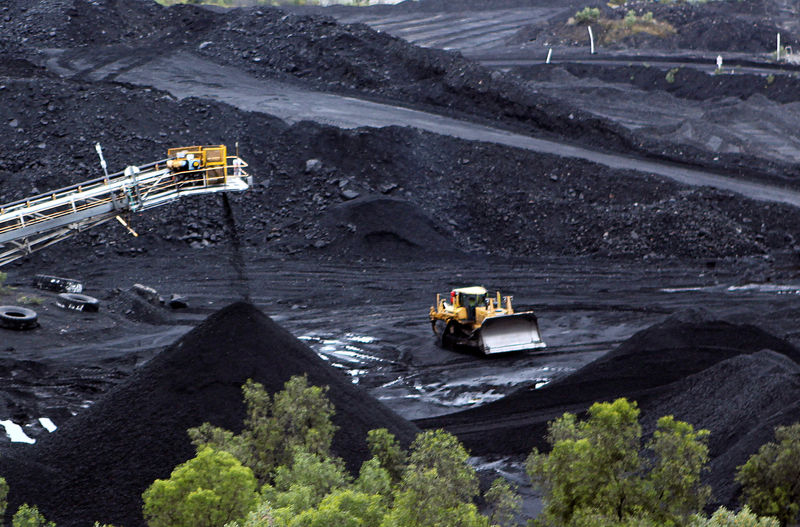(Repeats with no changes to text. The opinions expressed here are those of the author, a columnist for Reuters.)
By Clyde Russell
LAUNCESTON, Australia, Oct 18 (Reuters) - It would be easy to dismiss the Australian government's discarding of a renewable energy target as a Donald Trump-like attempt to cling on to polluting fossil fuels in the face of the rise of cleaner alternatives.
Certainly, the decision by the centre-right Liberal Party federal government to end subsidies for renewable energy projects and reject advice to set a clean energy target has the appearance of being an abandonment of efforts to mitigate climate change.
There will be no shortage of accusations that Prime Minister Malcolm Turnbull seems eager to walk in the footsteps of U.S. President Trump, who has made it a priority of his administration to support coal-fired power, while expressing doubt about the veracity of man-made climate change.
But rejecting Turnbull's new energy policy, announced on Tuesday, out of hand would be a mistake as it contains several important factors that may actually go some way to solving the Australian paradox of being a country rich in virtually every source of energy, but also suffering some of the highest electricity prices in the world.
There are two central pillars of Turnbull's new plan, a reliability guarantee and an emissions guarantee.
This means electricity producers will be set targets to deliver power when it's needed, while at the same time meeting an emissions target aimed at ensuring Australia meets its obligations under the Paris climate agreement.
How these targets will be set is still to be determined, and how they will be policed, and what penalties imposed for missing them will be under the purview of various regulators.
The main point of the new policy is that it's fuel neutral, with all sources of electricity generation being able, in theory, to compete on an equal basis.
"These guarantees will ensure there is a place for all power sources in the nation's future energy mix - solar, wind, coal, gas, batteries, pumped hydro," Turnbull said in a video posted on social media. "Our plan has no subsidies, no certificates and no tax."
The hope for Turnbull's government is that this plan not only reduces electricity prices for consumers, but also provides a reliable service, especially given public anger over blackouts, including a blackout caused by a storm in South Australia state last year.
In practice, the policy may favour coal- and natural gas-fired power plants as they are more easily able to guarantee what is termed dispatchable electricity, while renewables such as wind and solar are inherently more inconsistent.
The government said that under its plan fossil fuels would make up between 64 and 72 percent of power generation by 2030, while the opposition Labor Party is committed to a renewable energy target that would see the use of fossil fuels drop to 39 percent.
POLITICS MAY GET IN THE WAY
Turnbull's government is hoping that Labor will get behind its new policy, but this may prove forlorn, and if the opposition does reject the plan, the uncertainty that has stymied investment decisions on new generation is likely to continue.
The next federal election is due in 2019 and current polling suggests Labor has a good chance to defeat the ruling Liberal Party and its junior partner in government, the rural-based National Party.
A future Labor government would most likely seek to increase the share of renewable energy and possibly reinstate subsidies for the installation of solar and wind power.
However, if the reliability guarantee isn't too onerous for solar, wind and hydro, it seems likely that the backers of renewable energy will be given a chance to show that their technologies can compete on an equal footing.
The vision of renewable energy advocates is that these forms of power will be able to achieve economies of scale and sufficient critical mass to enable them to be cheaper than fossil fuels.
This may indeed turn out to be the case, as new coal-fired plants are expensive to build and could be hamstrung by the planned emissions guarantee, not to mention mounting public opposition to the polluting fuel.
Australia's coal-fired fleet is rapidly ageing and it's currently hard to see any major utility investing in a new plant, despite the abundance of reserves in the country, which is also the world's largest exporter of coal.
Gas-fired power is also problematic for Australia, given high domestic prices, especially on the populated east coast, where local consumers are competing with three liquefied natural gas (LNG) export plants.
While the cost of extracting natural gas in Australia compares favourably to other similar producers, the cost of transport along pipelines and the presence of the LNG plants has resulted in prices being roughly comparable to what Asian LNG consumers pay for their supplies.
This means natural gas power plants may struggle to be economical against coal, despite having lower emissions but at least equal reliability.
One of the best options for Australia is a combination of renewables and pumped hydro, in which cheap wind power is used during the low-demand night period to pump water from a low storage dam to a higher one so that it can be used for hydropower during the increased-demand daylight hours.
Overall, much will depend on how the government and regulators set the balance between reliability and emissions.
If they do manage to come up with a system that is evenly balanced, the advantage still may be with renewables, given their increasing public support and declining costs.
<^^^^^^^^^^^^^^^^^^^^^^^^^^^^^^^^^^^^^^^^^^^^^^^^^^^^^^^^^^^ GRAPHIC on Australia power markets
http://tmsnrt.rs/2pGZWtk
^^^^^^^^^^^^^^^^^^^^^^^^^^^^^^^^^^^^^^^^^^^^^^^^^^^^^^^^^^^> (Editing by Joseph Radford)
